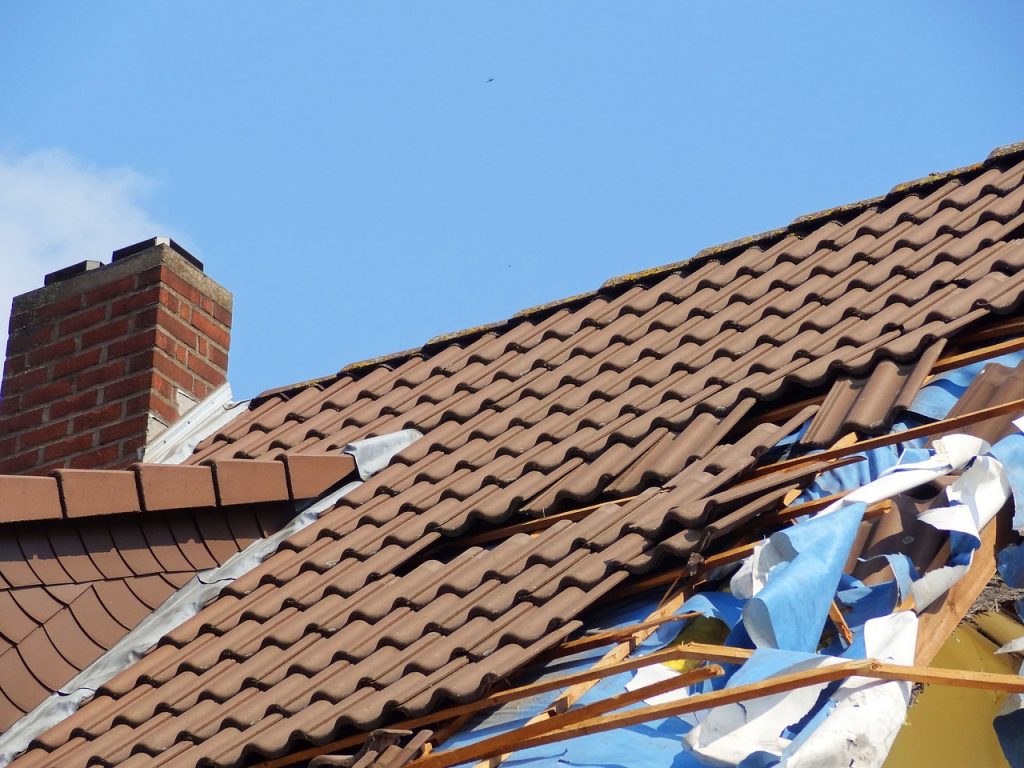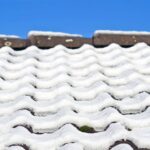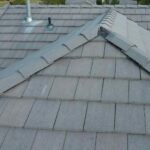
For the benefit of your Littleton, Colorado home, it’s essential to be aware of the routine signs of roof damage in order to implement necessary repairs as soon as possible and prevent further issues.
While there are roofing materials that are highly durable against damage, they are not invincible to breakage and deterioration. The earlier you can catch roof damage, the better you can prevent it from worsening. In this blog, you’ll learn more about what can cause damage to your roof and the usual signs of roof damage homeowners should look out for.
What can Damage your Roof?
There are various factors that can cause damage to your roof, and your area’s local climate is one of them. Hailstorms are common in Colorado towns like Littleton, and from time to time, Colorado residents experience other severe weather like thunderstorms and tornadoes. Hailstorms, damaging winds, and heavy rain are just some extreme weather conditions that can cause roof damage and significantly shorten a roof’s lifespan.
Sun damage, wherein the intense UV rays cause shingles to break down prematurely, can also cause damage on your roof over time. Meanwhile, Fallen debris, like tree branches, can break and dislodge your roofing. Additionally, an older roof is more prone to weathering and sustaining the above-mentioned damages.
These root causes of roof issues become an entryway for water and moisture damage, which in turn causes more problems and costly repairs. It’s essential to look for the common and even the most subtle signs of roof damage in your home to help prolong your roof’s lifespan and prevent deterioration from worsening.
Common Signs of Roof Damage
Signs of roof damage is usually hard to spot, especially in its early stages, where everything looks fine at first glance. Regular roof inspections help homeowners identify breakage and issues on their roof before it becomes too big of a problem. When inspecting your roof and home, pay attention to these tell-tale warning signs that point to signs of roof damage:
- Water Stains on Ceiling
One of the most noticeable signs of roof damage is water stains on the ceiling. These stains often appear as discolored patches or brown spots and are typically caused by roof leaks. When a roof is compromised, water can seep through and infiltrate the interior of the house, leaving unsightly marks on the ceiling and at time peeling or bubbling on your walls.
Ignoring water stains can lead to more extensive damage, such as weakened structural integrity, mold growth, and even electrical hazards.
- Damaged or Missing Shingles
Over time, roof shingles can become damaged or dislodged due to weather conditions, age, or improper installation. Damaged shingles can present as curling, cracking, blistering, or granule loss. These issues can compromise the integrity of the roof, making it susceptible to leaks and further damage. Missing shingles, on the other hand, create vulnerable areas where water can penetrate the underlying layers of the roof.
If damaged or missing shingles are detected, it is crucial to replace them promptly. Ignoring these issues can lead to more extensive damage, including rotting of the roof deck and increased vulnerability to wind damage.
- Granule Accumulation in Gutters
Gutters are designed to channel water away from the roof and the foundation of the house. However, when a roof is deteriorating, the protective granules on the shingles can become dislodged and accumulate in the gutters. This granule accumulation is a clear indication that the shingles are deteriorating and may need to be replaced.
The granules serve as a protective layer for the shingles, shielding them from harmful UV rays and other elements. When the granules are no longer present, the shingles become more vulnerable to damage and can deteriorate at an accelerated rate.Regularly inspecting gutters for granule accumulation can help identify potential roof damage early on.
- Corroded Flashing
Roof flashing is a thin metal layer used on parts of your roof to redirect water away from vulnerable areas that may cause leaks. Different types of flashing can be found on skylights, vent pipes, sides of chimneys, edges of the roof, and other critical areas.
When you spot curled, cracked, or corroded flashing, it’s best to replace them quickly. Damaged flashing leaves the vulnerable areas of your roof unprotected and the perfect entrance for water thus causing leaks.
- Clogged Gutters
Gutters play the crucial role of carrying rainwater away from your roof and home. While clogged gutters aren’t necessarily direct damage on your roof, it is a common issue that often leads to roof water damage.
With an obstructed gutter system, the collected rainwater overflows onto the roof instead of going down the downspout. The pool of water then starts the rotting and deterioration of your roofing, leading to leaks, mold, and weakened shingles and roof structure.
- Presence of Mold or Mildew
When looking for signs of roof damage, don’t overlook mold and mildew. When a roof leaks or allows moisture to enter the house, it creates a favorable environment for mold and mildew growth. Mold can be found on walls, ceilings, and even in hidden areas such as attics or crawl spaces.
Mold and mildew not only cause unpleasant odors and stains but also pose health risks to individuals with respiratory conditions or allergies. Ignoring mold growth can lead to further damage to the structure and compromise indoor air quality.Consulting a professional mold remediation specialist and a roofer can help identify the source of the moisture and provide appropriate repairs to prevent further mold growth.
- Increased Energy Bills
Unexplained spikes in energy bills can be an indirect indicator of roof damage. When a roof is compromised, it allows the escape of conditioned air and the intrusion of outside air. Because of the additional effort required to maintain a suitable indoor temperature through heating and cooling systems, energy use has grown, and utility costs have gone up.
If homeowners notice a sudden and significant increase in their energy bills, it is worth considering the condition of the roof. Promptly addressing signs of roof damage can help improve energy efficiency and lower utility costs in the long run.
Importance of Regular Roof Inspections
The earlier you know that there’s damage, the faster you can implement solutions. Roof inspections allow homeowners to check the condition of their roofs throughout the seasons and after severe weather. It helps gauge if there are any damages that need repairing or replacing.
While the importance of roof inspections is often overlooked, in reality, it is a crucial step in proper roof maintenance and in extending the lifespan of your roof. Fast repairs help prevent minor problems from turning into major ones, plus it helps you save money in the long run too.
How Often Should I Get Roof Inspections?
Ideally, it’s recommended that homeowners inspect their roof twice a year— specifically around Fall and Spring season when there’s mild weather. The clear weather makes it easier to spot issues or areas needing fixes.
While two times a year is recommended, it’s also equally important to have your roof inspected after hazardous weather such as damaging winds and severe hail. Even newer roofs aren’t safe from these weather conditions and require checking after the storm.
Professional Roof Inspections in Littleton, Colorado
Roof inspections can be done either by the homeowner or a professional roofer. However, professional roof inspections offer more advantages in terms of expertise and experience. A professional roofer will have the knowledge, skills, and experience to properly assess the condition of your roof and recommend the necessary repairs or replacements.
They will also have access to high-quality materials and tools, ensuring that the job is done right the first time. Additionally, a professional roofer will be familiar with local building codes and regulations, ensuring that your roof repairs or replacements comply with all requirements.
The best practice is for homeowners and professional roofers to work hand in hand. Homeowners can conduct their own inspections and look out for signs of roof damage while still enlisting the help of professionals such as Bjorn’s Roofing for expert guidance and making sure all problems are addressed properly.
Conclusion
As a homeowner, it is crucial to be vigilant and proactive in identifying and addressing roof damage. Ignoring signs of roof damage can lead to significant issues, including water damage, mold growth, and increased repair costs.
By regularly inspecting the roof for indicators such as water stains, damaged shingles, granule accumulation, and broken flashing, homeowners can take the necessary steps to maintain a safe and secure home.
Consulting professional roofers for inspections, repairs, and maintenance can provide peace of mind and ensure the longevity of the roof. Remember, addressing roof damage promptly can save you from costly repairs and protect your most valuable asset – your home.
When it comes to fixing damage on your roof, Bjorn’s Roofing is eager to help. We provide FREE roof inspections and expert solutions for your roofing needs. Whether you’ve got hail damage or want to upgrade an aging roof, we’re always ready to give our 100% in restoring your roof to its best condition!
Latest Posts
Related: hidden signs of a roof leak, roof leaks in heavy rain, signs of bad roof shingles, signs of storm damage, signs of hail, stains on ceilings or walls, signs your roof has storm damage, hail damage to your roof, gutters and downspouts, signs of roof damage



